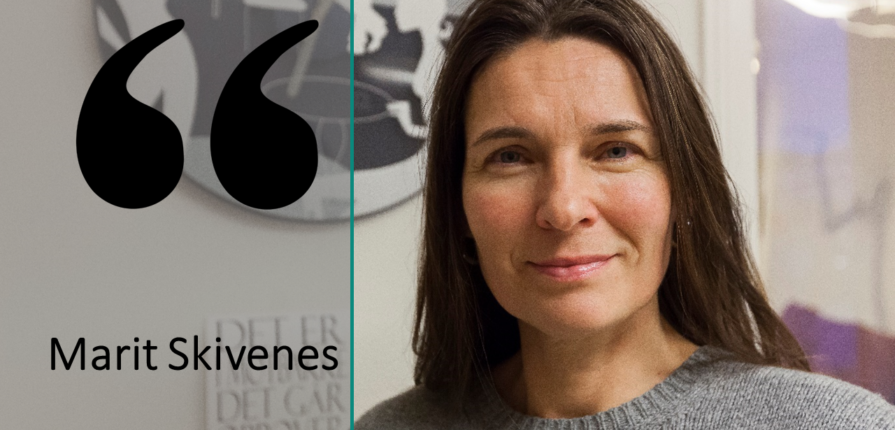BLOG: How does the Norwegian state uphold its obligation to protect children from harm and abuse?
The U.N. Convention on the Rights of the Child (CRC) formulates in Article 19 a state’s obligation to protect children against detrimental care:
“State Parties shall take all appropriate legislative, administrative, social and educational measures to protect the child from all forms of physical or mental violence, injury or abuse, neglect or negligent treatment, maltreatment or exploitation, including sexual abuse, while in the care of parent(s), legal guardian(s) or any other person who has the care of the child.
Such protective measures should, as appropriate, include effective procedures for the establishment of social programmes to provide necessary support for the child and for those who have the care of the child, as well as for other forms of prevention and for identification, reporting, referral, investigation, treatment and follow-up of instances of child maltreatment described heretofore, and, as appropriate, for judicial involvement.”
The scope of the state’s responsibilities that are set out in Article 19, section 2, is broad. We know from a range of comparative rankings and indices that the Norwegian child protection system scores high on such rankings. The Norwegian system also upheld high standards for what is considered a good system adhering to rule of law and due process for involved parties.
However, there are blind spots that cast doubts on whether children in Norway are sufficiently protected and if the Norwegian system is sufficiently grounded in the ethos of the CRC.
In a recently published book chapter written by political scientist Asgeir Falch-Eriksen and myself, we examine the child protection system in Norway and identify five areas for improvement:
First is competency and education in the child protection system, which is an immensely important area for improvement. A recent report from the Health Audit Agency assessing 106 care order cases underscored a lack of analytical skills in the frontline staff in their decision making, reporting that, “…we see that an overweight of the examinations lacks an analytical approach to the material from the examination. Analyzes with the child are lacking as a starting point when the material from the surveys is to be summarized, assessed and concluded. The child welfare service does not use what they find, to make conclusions.” (2019, p. 44).
This conclusion highlights the necessity for improvement in the education of child welfare workers. The complex decision making and knowledge required, and respect and sensitivity that must be present in dialogue and collaboration with children and parents, make it imperative to ensure competent and qualified personnel.
Second is the wide scope of discretionary decision-making, which threatens the principle of equality and requires substantially strengthened professional competency.
Third is the increased value of pluralism in societies, which is accentuated in relation to migration.
Fourth and fifth are two important issues from the child’s perspective: the pattern of defective involvement of children and the lack of attention and awareness around the conditions for choosing one’s life course as an adult.
The trend is that children are receiving more protective measures internationally than in Norway. We must ask if this indicates that more children need protection, if more at-risk situations are detected, or if the definition of what should be protected has changed.
We argue that it is most likely a combination of these three drivers. However, the CRC and the increased child-focus evident in policy, practice, and cultural practices, have clearly heightened the awareness and knowledge about children’s situation and needs.
Part of the contemporary debate remains about the limits of the responsibilities of child protection systems. Specifically, this dilemma is accentuated in relation to the debate on the future of children and their being equipped to choose their own life course as adults.
Health, religion, and cultural practices are three areas that are continually contested and challenge how the border should be drawn between public and private responsibility for children in need of protection.
The book chapter is an open access publication:
- Falch-Eriksen, A. & Skivenes, M. (2019). “Right to protection“ in Langford, M., Skivenes, M. & Søvig, K. (eds.) Children’s Rights in Norway: An Implementation Paradox?. Oslo: Universitetsforlaget.
Helsetilsynets rapport på norsk: (https://www.helsetilsynet.no/globalassets/opplastinger/publikasjoner/rapporter2019/helsetilsynet_rapport_unummerert_gjennomgang_106_barnevernsaker.pdf):
- “Samtidig ser vi at en overvekt av undersøkelsene mangler en analytisk tilnærming til materialet fra undersøkelsen. Det mangler analyser med barnet som utgangspunkt når materialet fra undersøkelsene skal oppsummeres, vurderes og konkluderes. Barneverntjenesten bruker ikke det de finner, til å konkludere.” (s. 44)


